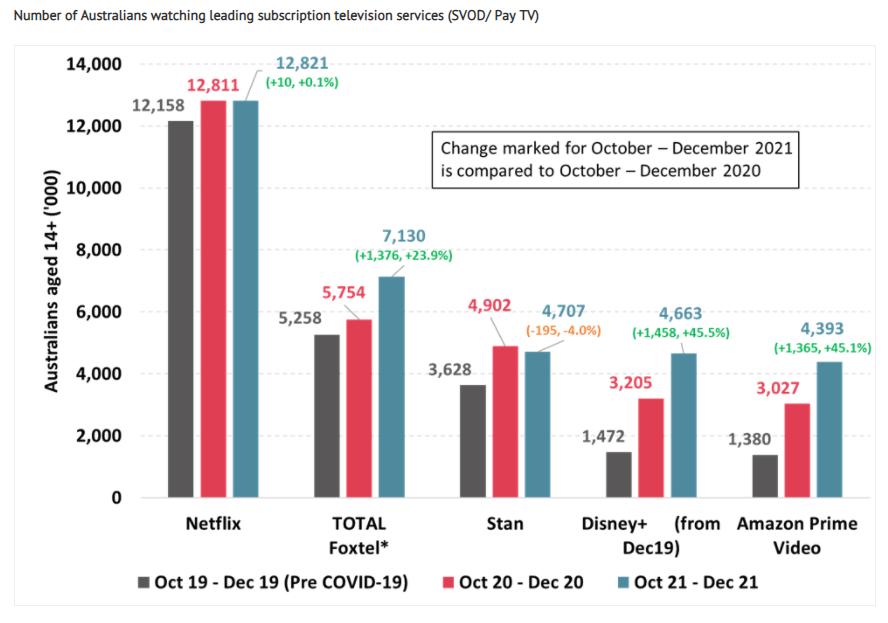Last month, Roy Morgan Research released survey data showing that Foxtel experienced rapid 35% growth in viewer numbers between 2019 and 2021, with 24% of that growth coming in the 2021 calendar year:

Foxtel’s viewer numbers surged 35% between 2019 and 2021.
While such explosive growth in viewer numbers is prima facie a good news story for Foxtel, telecommunications expert Paul Budde notes that it has coincided with another fall in subscription revenue:
In 2020, [Foxtel] launched yet another streaming service — Binge. After all those years of hitting its head against a brick wall, it now has put its pricing in line with the competition. Binge costs between $10 and $18 a month, based on the package.
Foxtel released its earnings earlier this month where it reported a total number of 3.9 million pay-TV and streaming services. However, its revenue further dropped 3% to US$498 (AU$683).
Thus, Foxtel has effectively cannibalised its subscriber base by encouraging existing customers on expensive (high-margin) plans like its traditional pay-TV service to downgrade to the cheaper streaming options like Binge or Kayo.
In turn, Foxtel has crushed its margins and requires much larger subscription numbers to earn the same level of profit.
Budde also argues that “Kayo, Binge, Foxtel Now and whatever the company will come up next with will never be able to compete with the services of the global players”, given the big production studios with whom Foxel has previously struck content deals with are themselves establishing their own streaming services in Australia, including Paramount+ and Disney Plus.
For mine the biggest risk to Foxtel lies with its exclusive content deal with HBO, which expires in 2023. If HBO Max decides to cut ties and enter the Australian market, then one of the biggest drawcards for subscribing to Foxtel will vanish.
Ultimately, Foxtel’s biggest problem is that it only exists in Australia. Its competitors (aside from Stan) have entered Australia as an afterthought and don’t need to succeed here to survive. They view Australia as a way to make some additional money for little effort – the proverbial ‘cherry on top’.
The global streaming giants have economies of scale on their side and lower average costs, which makes Foxtel structurally vulnerable in the increasingly crowded video-on-demand market.

